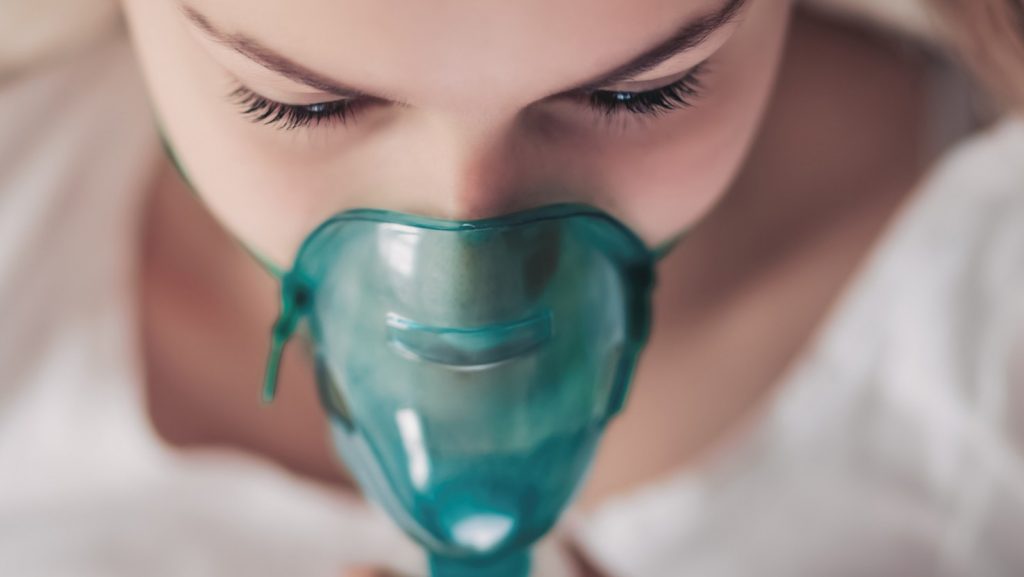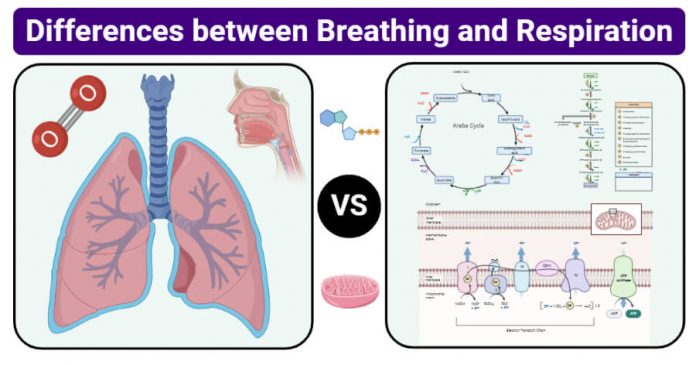As you sit reading this blog, you probably don’t even think that you need energy. When thinking about ourselves. Difference between breathing and respiration. We associate the word energy with playing games or getting tired (ran out of energy).
However, this is not a correct way to think about humans and energy. Your body needs a constant supply of energy. Just like any machine, your body transforms one form of energy into another form of energy so it can work. Here are some examples of the work your body is doing right now:
- You are breathing
- Your heart is beating
- Food is pushed along your intestine
- Food is being absorbed in cells
- New cells are being produced
All these processes and many other requires a lot of energy. But how and where do we get this energy from? Please keep reading to know more about it.
What is breathing?
According to a perfect definition: “Breathing is a biophysical process that involves the exchange of gases through inhalation and exhalation.” Breathing also known as external respiration. As it involves respiratory organs to throw carbon dioxide outside the body and taking in oxygen externally.
The nose and alveoli of all vertebrates connected through a network of branches. They help to breathe in and out. The number of respiratory cycles in a minute called breathing. The homeostasis mechanism keeps the rate and depth of oxygen and carbon dioxide maintained during breathing.
The lungs cannot inflate or deflate on their own. So, the muscles in the thoracic cavity contract and relax while breathing. The diaphragm and intercostal muscles contract to give space for the lungs to inflate, causing the rib cage to move upwards and outwards. During inhalation, the air moves from the nose to nasal passage, pharynx, and larynx to the respiratory tree.
The beginning of the respiratory tree known as the trachea. A respiratory tree has several narrower branches, namely twenty-three in humans. The air travel through these branches to reach its final destination, alveoli. The exchange of gases occurs in alveoli. Carbon dioxide in the blood diffused in alveoli, and oxygen diffused in the blood.
When the diaphragm and intercostal muscles relax, the lungs contract, their contraction causes the exhalation of Carbon dioxide. The exhalation process also known as the passive process. While exhaling, the air pushed outside via the same route, trachea, and nasal passage.
A body must have a good energy level for breathing. As it’s a voluntary process hence requires a lot of energy.
What is respiration?
According to a perfect definition.:” Respiration a biochemical process to release energy from organic compounds. Which then used for performing different physical activities.” Respiration knew as internal respiration. Respiration the oxidation of food substances with the release of energy in living cells.
There are two forms of respiration: aerobic and anaerobic respiration.
Aerobic respiration is the breakdown of food substances in the presence of oxygen with the release of a large amount of energy: carbon dioxide and water released as a by-product.
Anaerobic respiration is the breakdown of food substances with the release of a comparatively small amount of energy in the absence of oxygen. This is an involuntary action that happens automatically if desired reactants are available. It occurs in the mitochondria of a cell. The catabolic reactions taking place during cellular respiration break down complex substances into simple ones.
Various enzymes catalyze various processes of respiration. They control the rate and direction of reactions. Carbohydrates, amino acids, and fatty acids the most common nutrients used by organisms. Molecular oxygen an oxidizing agent.
Fermentation is also a type of respiration. It is anaerobic respiration that forms alcohol as a byproduct. This process usually used in the manufacturing of cheese and similar products.
What is the difference between breathing and respiration?
Let’s have a look at the critical differences between both activities. On what basis are they different from each other.

What are their definitions?
Breathing is a process that brings about an exchange of gases between organisms and the environment. In contrast, respiration is the oxidation of food substances with the release of energy in living cells.
How can we distinguish these processes?
Breathing is a biomechanical process, whereas respiration is a biochemical process.
What are the steps involved?
Breathing involves inhalation and exhalation. The taking in of air and water called inspiration. And the giving out of air and water called exhalation.
C6H12O6 + 6O2 → 6CO2 + 6H2O + energy or (glucose + oxygen -> carbon dioxide + water energy). This is an equation of aerobic respiration.
Is it voluntary or non-voluntary?
Breathing considered both voluntary and involuntary action. However, respiration an involuntary action.
Is it a passive or an active process?
Respiration does not require any energy. While breathing, exhalation is a passive process, and inhalation is an active process.
What’s the purpose?
Respiration produces a large amount of energy to the body by the breakdown of food substances. And breathing transports oxygen to all parts of the body.
Does every living thing go through these processes?
Breathing occurs in vertebrates only, whereas respiration occurs in every living organism on this earth.
Which process releases energy?
Respiration is a process to release energy. However, breathing does not provide any energy to the body.
Are enzymes required for these processes?
Enzymes play a significant role during respiration and its different stages. But breathing does not require any enzyme.
Are there any organs involved?
Breathing affects all organs of the respiratory system, whereas respiration occurs in the mitochondria of a cell.
Is this an Intracellular or extracellular activity?
Breathing is an extracellular process, and respiration is an intracellular process.
Are there any muscles involved?
As described earlier, breathing involves a lot of muscles and movement of the diaphragm. In contrast, there is no role in muscle movement during respiration.
How are these processes regulated?
During breathing, the diaphragm and intercostal muscles regulate this function. And during respiration, different enzymes regulate this function.
What are the key activities involved?
Exchange of gases and ventilation two basic activities carried out during breathing. The exchange of gases and organic compounds’ breakdown to release energy carried out during respiration.
Are there any metabolic reactions taking place?
Respiration is a metabolic process that involves a lot of chemical reactions. On the other hand, breathing does not involve any metabolic reaction.
Before we started this topic, you must be thinking of breathing and respiration as the same process. But as you go through this article, things must have cleared in your mind. These two processes different and can never said as interchangeable.
Also, read the Difference between BE and B.Tech.
